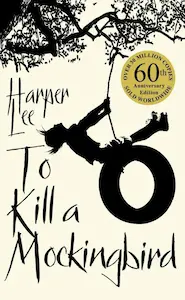To Kill A Mockingbird - Summary
Harper Lee

Introduction
“To Kill a Mockingbird” is a novel written by Harper Lee and published in 1960. The story is set in the fictional town of Maycomb, Alabama, during the Great Depression. The novel is narrated by Jean Louise Finch, also known as Scout, who tells the story of her father, Atticus Finch, a lawyer who defends a black man accused of raping a white woman. The novel has become a classic of American literature and has been widely read and studied in schools and universities.
Plot Summary
The novel takes place over the course of three years, beginning when Scout is six years old and ending when she is nine. The story is divided into two parts. In the first part, Scout and her brother Jem become friends with a boy named Dill, who comes to stay with his aunt for the summer. The three children become fascinated with their reclusive neighbor, Arthur “Boo” Radley, who has not been seen in public for years. They try to lure him out of his house, but are stopped by their father, Atticus.
In the second part of the novel, Atticus defends Tom Robinson, a black man accused of raping a white woman. Despite overwhelming evidence in Tom’s favor, he is found guilty by an all-white jury and sentenced to death. Atticus’s defense of Tom causes tension in the town, and he and his family are threatened. In the end, Scout and Jem are attacked by the real perpetrator of the crime, and Boo Radley saves their lives. Atticus’s defense of Tom is ultimately unsuccessful, but he is able to show his children the importance of standing up for what is right.
Themes
One of the main themes of “To Kill a Mockingbird” is the injustice of racism. The novel portrays the racism that was prevalent in the South during the 1930s, and shows how it affected the lives of African Americans. Atticus’s defense of Tom Robinson is a powerful statement against racism, and the novel shows the devastating consequences of prejudice and discrimination.
Another theme of the novel is the loss of innocence. Scout and Jem begin the novel with a childlike innocence, but as they witness the injustices of the world around them, they begin to lose their naivety. The novel shows how the loss of innocence is a painful but necessary part of growing up.
Characters
The characters in “To Kill a Mockingbird” are complex and well-developed. Scout is a tomboy who is curious about the world around her. Jem is her older brother, who is protective of his sister and has a strong sense of justice. Atticus is their father, who is a wise and compassionate man. Other important characters include Calpurnia, the family’s African American housekeeper, and Boo Radley, the reclusive neighbor who saves Scout and Jem’s lives.
Writing Style
Harper Lee’s writing style in “To Kill a Mockingbird” is simple and straightforward, but also poetic and evocative. The novel is written in the first person, from Scout’s perspective, and Lee captures the voice of a child perfectly. The novel is full of vivid descriptions of the town of Maycomb and its inhabitants, and the dialogue is realistic and engaging.
Symbolism
“To Kill a Mockingbird” is full of symbolism. The title of the novel is a metaphor for the destruction of innocence. The mockingbird is a harmless bird that sings beautiful songs, and killing one is a sin. The novel also uses other symbols, such as the oak tree outside the courthouse, which represents the stability and strength of the legal system.
Historical Context
“To Kill a Mockingbird” was published during the Civil Rights Movement, and it reflects the social and political climate of the time. The novel was written in response to the racism and injustice that was prevalent in the South, and it has become an important part of the Civil Rights canon. The novel has been praised for its portrayal of African American characters, who are depicted as complex and fully realized individuals.
Reception
“To Kill a Mockingbird” was an immediate success when it was first published, and it has remained popular ever since. The novel has won numerous awards, including the Pulitzer Prize, and it has been adapted into a successful film and a Broadway play. The novel has been praised for its powerful message against racism and its portrayal of the loss of innocence.
Conclusion
“To Kill a Mockingbird” is a powerful novel that explores the themes of racism, injustice, and the loss of innocence. The novel has become a classic of American literature and has been widely read and studied in schools and universities. Harper Lee’s writing style is simple and poetic, and the novel is full of vivid descriptions and engaging dialogue. The novel has been praised for its portrayal of African American characters and its message against racism. “To Kill a Mockingbird” is a timeless novel that continues to resonate with readers today.